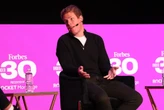Most business advice tells you to avoid making enemies. I’m here to tell you the opposite: if your brand doesn’t have an enemy, you’re doing it wrong.
This isn’t to suggest you need to create conflict for conflict’s sake. But there’s power in opposition. When you stand so clearly for something that you inevitably stand against something else, you create clarity. And in this very cluttered marketplace, that clarity isn’t just helpful, it’s essential for survival.
The Problem with Playing it Safe
When brands attempt universal appeal, they typically achieve universal mediocrity. People think you’re “fine.” Fine pays the bills, but it doesn’t create category leaders.
The numbers prove it: distinctive brands see a 62% higher ROI than campaigns that lack distinctiveness. That’s no small difference between being remembered and being forgotten. Distinctive brands put a stake in the ground and say, “This is who we’re for,” whether through visuals, tone, or messaging. Brands chasing universal appeal usually sand off their edges and end up forgettable.
The companies that break through today aren’t the ones avoiding conflict. They’re the ones brave enough to pick a side and fight for it.
Why Your Enemy Isn’t Your Competition
Competition is tactical. It’s about market share, features, and pricing. Your enemy is philosophical. It’s a way of thinking, a set of values, or a specific worldview that your brand exists to challenge. Think of giving your business an enemy in this way:
- Bigger than a competitor: Your enemy transcends individual companies.
- Ideological: It represents a philosophy or approach you oppose.
- Galvanizing: It gives your audience something to rally against.
- Clarifying: It forces you to define what you really stand for.
The Psychology of Taking Sides
As humans, it’s natural for us to pick teams and stick with our tribe. Our brand choices become part of our identity, from the coffee we drink to the phones we carry. It’s those brands that establish clear us-versus-them psychology that win. They make customers feel “they get me.” This creates tribal loyalty where the brand becomes part of someone’s persona—and they’ll defend it at any cost. Here are some examples of how some of the most memorable brands took on an enemy:
Apple vs. Ordinary Apple positioned itself as the ultimate creative company, calling competitors “Orwellian” in its 1984 campaign and “boring” in the Mac vs. PC ads. It established its core as the creative side of humanity and never wavered. Sure, it’s 1,000 times larger now, but its commitment to opposing “ordinary” remains unchanged.
Southwest Airlines vs. Complexity Southwest’s enemy was airline complexity. Buy a fare, grab a seat, and bring your bags. No extra charges, no caste system with 11 boarding groups, no material guilt about your life choices if you weren’t in the top five. Outsiders called this process a “cattle call,” but Southwest turned a deaf ear to the noise, and its core kept growing.
However, Southwest recently announced it’s adopting traditional airline practices in 2025–26, abandoning its differentiating enemy. We’ll see how the loyalists respond now that there’s nothing separating Southwest from its competitors.
Creating Your Enemy
Ready to find your company’s natural opponent? Here’s how to do it strategically:Step 1: Identify Your Natural Opposition
Which way of thinking or doing business does your company naturally push back against? What frustrates your founders and leaders about the industry? What cultural perspective seems bonkers to you?
Step 2: Articulate the Stakes
Why does this opposition matter? What’s at risk if the “enemy” worldview wins? In its Mac vs. PC ads, Apple positioned the competition as out of touch and un-inventive, making the stakes crystal clear by casting itself as the creative outlet for the future.
Step 3: Rally Your Core
Communicate your position in a way that makes your ideal customers feel seen and understood. They should think: “Finally, someone gets it.” Dairy brand Tillamook rallied its core by leaning into quality over scale, unapologetically charging more for real ingredients and a small-batch approach, even when that meant losing price-sensitive shoppers.
Step 4: Accept the Tradeoffs
Not everyone will like you. That’s the point. Oatly came out of the gate directly challenging Big Dairy with its “like milk, but made for humans” stance—fully accepting that it would alienate traditionalists in order to build a cult following among plant-based loyalists.
Why This Works Now More Than Ever
Differentiation is survival. People are overwhelmed with choices and increasingly loyal to companies that feel authentic and purposeful. Having a clear enemy provides both.
Your enemy isn’t trying to destroy you. Instead, it’s saving you from irrelevance. Without something to stand against, there’s no reason for anyone to stand with you.
Remember: you will never win without your enemy. Your enemy always wins without you.










No comments